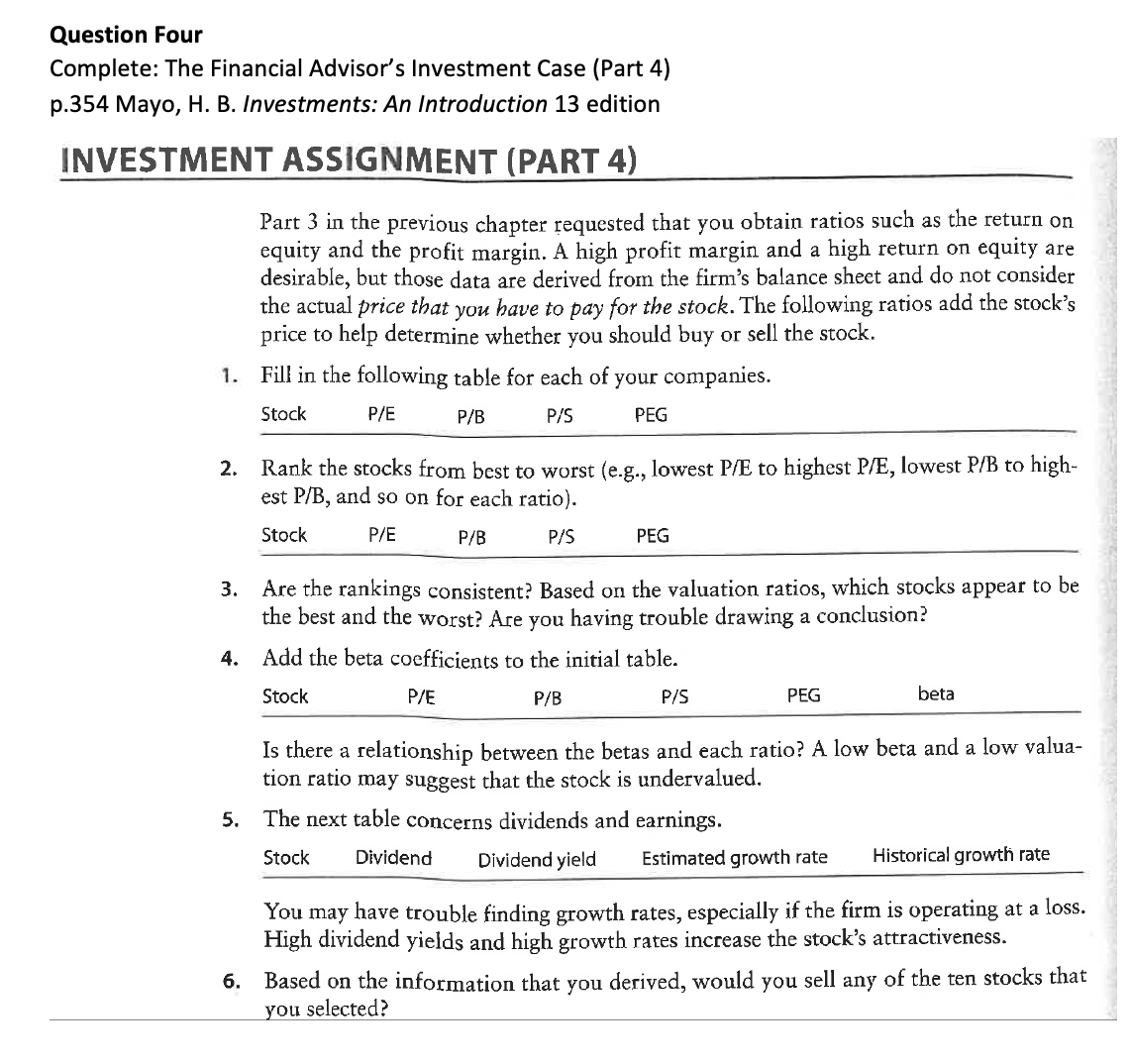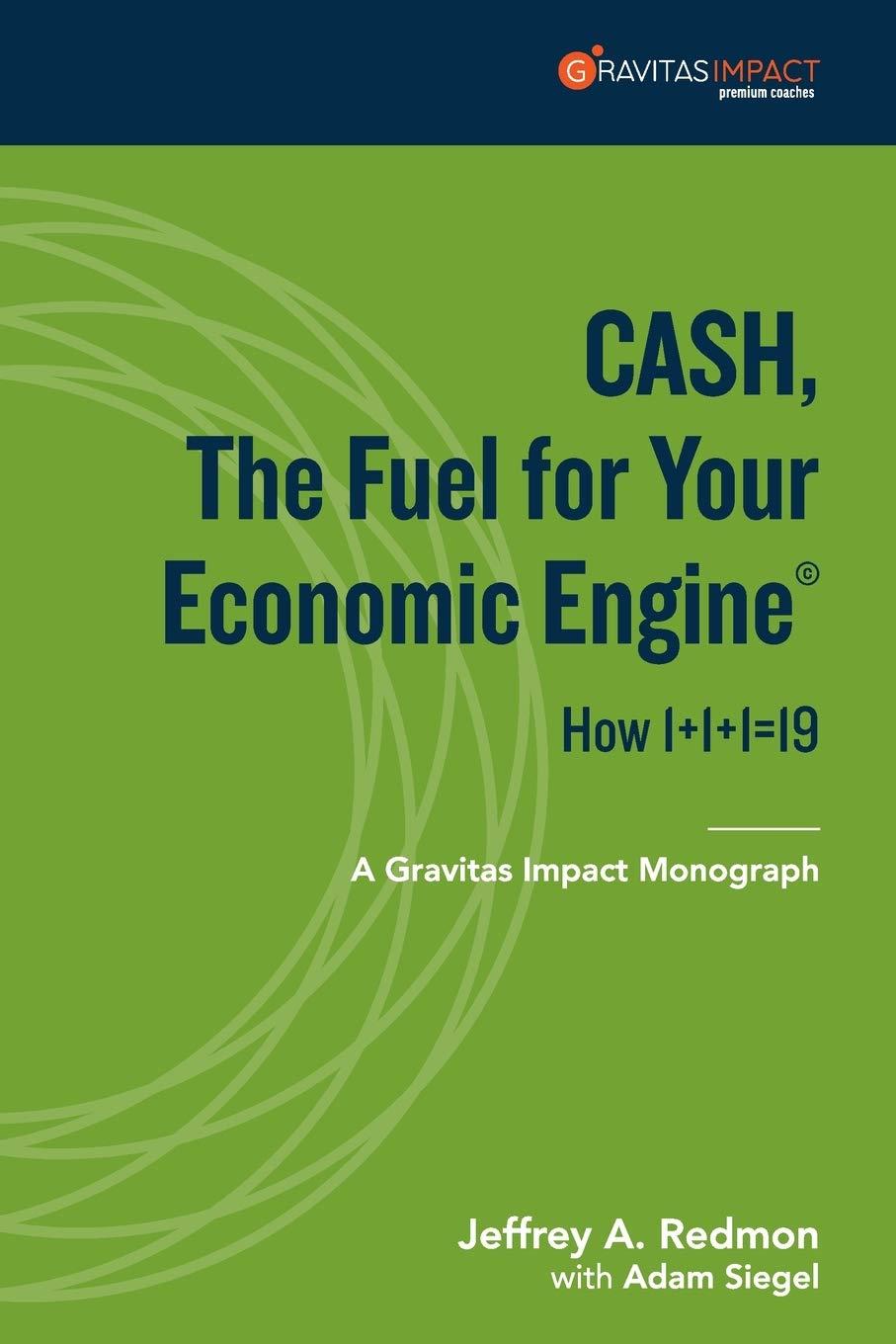
Question Four Complete: The Financial Advisor's Investment Case (Part 4) p.354 Mayo, H. B. Investments: An Introduction 13 edition INVESTMENT ASSIGNMENT (PART 4) Part 3 in the previous chapter requested that you obtain ratios such as the return on equity and the profit margin. A high profit margin and a high return on equity are desirable, but those data are derived from the firm's balance sheet and do not consider the actual price that you have to pay for the stock. The following ratios add the stock's price to help determine whether you should buy or sell the stock. 1. Fill in the following table for each of your companies. Stock P/E P/B P/S PEG 2. Rank the stocks from best to worst (e.g., lowest P/E to highest P/E, lowest P/B to high- est P/B, and so on for each ratio). Stock P/E P/B P/S PEG 3. Are the rankings consistent? Based on the valuation ratios, which stocks appear to be the best and the worst? Are you having trouble drawing a conclusion? 4. Add the beta coefficients to the initial table. Stock P/E P/B P/S PEG beta Is there a relationship between the betas and each ratio? A low beta and a low valua- tion ratio may suggest that the stock is undervalued. 5. The next table concerns dividends and earnings. Stock Dividend Dividend yield Estimated growth rate Historical growth rate You may have trouble finding growth rates, especially if the firm is operating at a loss. High dividend yields and high growth rates increase the stock's attractiveness. 6. Based on the information that you derived, would you sell any of the ten stocks that you selected? Question Four Complete: The Financial Advisor's Investment Case (Part 4) p.354 Mayo, H. B. Investments: An Introduction 13 edition INVESTMENT ASSIGNMENT (PART 4) Part 3 in the previous chapter requested that you obtain ratios such as the return on equity and the profit margin. A high profit margin and a high return on equity are desirable, but those data are derived from the firm's balance sheet and do not consider the actual price that you have to pay for the stock. The following ratios add the stock's price to help determine whether you should buy or sell the stock. 1. Fill in the following table for each of your companies. Stock P/E P/B P/S PEG 2. Rank the stocks from best to worst (e.g., lowest P/E to highest P/E, lowest P/B to high- est P/B, and so on for each ratio). Stock P/E P/B P/S PEG 3. Are the rankings consistent? Based on the valuation ratios, which stocks appear to be the best and the worst? Are you having trouble drawing a conclusion? 4. Add the beta coefficients to the initial table. Stock P/E P/B P/S PEG beta Is there a relationship between the betas and each ratio? A low beta and a low valua- tion ratio may suggest that the stock is undervalued. 5. The next table concerns dividends and earnings. Stock Dividend Dividend yield Estimated growth rate Historical growth rate You may have trouble finding growth rates, especially if the firm is operating at a loss. High dividend yields and high growth rates increase the stock's attractiveness. 6. Based on the information that you derived, would you sell any of the ten stocks that you selected







